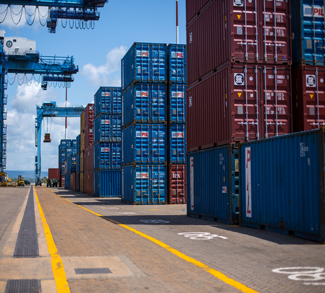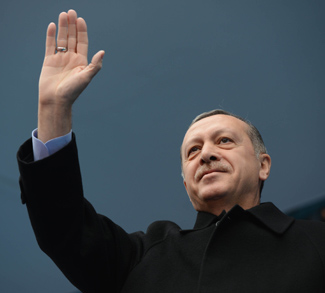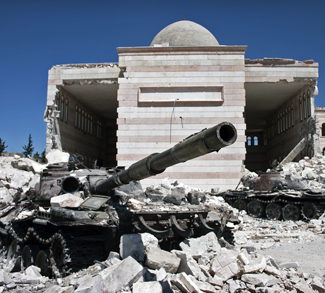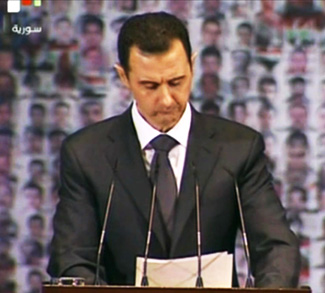Geopoliticalmonitor.com sits down with Dr. Parag Khanna, international relations expert and best-selling author of Connectography: Mapping the Future of Global Civilization.
Has the rhetoric of the US presidential race done irreparable harm to the Cold War alliance system?
Since the Cold War ended a quarter century ago, there are quite a few structural issues that force us to rethink how alliances are structured, such as the changing role of Russia and relations with it, new geographies of intervention, fiscal pressures in member states, diverse kinds of challenges such as immigration and terrorism. So while the US presidential election rhetoric from Donald Trump has highlighted the issue of burden-sharing in NATO, it’s certainly not something new. The deeper questions still need to be addressed: Can NATO have consensus over its mandates and burden-sharing to effectively tackle them?
And that’s just with respect to transatlantic relations; in the Far East there is a whole other set of structural challenges because the Cold War alliance system in the Far East has morphed into a US-led constellation to check China’s rise, but many Asian countries don’t identify with that mission given their deep histories and relations with China.
Name three pressing geopolitical issues that should be at the very top of the next US president’s ‘to-do’ list.
Regional security organizations for the Mideast and Far East should be the top geopolitical priority. This means having all major powers in each region at the same table. In the Middle East, this means Saudi Arabia, Israel, Turkey and Iran. The U.S. has to sponsor and help nurture these institutions so that it can decrease its own extensive and provocative commitments to the region.
Trade should also be a top priority, especially pushing for passage of TPP and TTIP. These agreements are not perfect, but at a time of growing protectionism and industrial policy, they are crucial to maintaining interdependence.
Much has been made of China in this US presidential race, particularly in terms of free trade. Are China and US interests complimentary or conflicting in the trade sphere?
They are more complementary than many realize. China may not be an early member of TPP, but will shift its supply chains and production networks further into TPP member countries such as Vietnam to access the US market if TPP goes through. If TPP succeeds at reducing Asian countries’ support for SOEs, then American profits and exports in Asia including China could experience significant gains as well.
What is one area where President Obama’s foreign policy deserves credit?
The Obama administration has been consistent in its desire to engage with Iran, even though the bloody crackdowns in Iran after their 2009 elections made it unpalatable to do so. The sanctions policy was not accomplishing much, and engagement is a surer path to modifying the regime’s behavior.
… And one where it falls short?
Obama’s administration has lacked a coherent Russia strategy and rather than find ways to integrate and shape the country’s behavior despite the Ukraine invasion, it has further alienated it, which hasn’t benefited either side.
Do either of the presidential candidates have a compelling plan to rebuild aging infrastructure within the United States?
Hillary strongly supports the creation of a National Infrastructure Bank. Proposals in this direction, however, predate her tenure as senator and have had bipartisan support in the past. One can only hope that if she is elected some such institution will see the light of day and provide the financial instruments to unlock the trillions of dollars of capital badly needed for America’s infrastructural renewal.
Can the Sykes-Picot conception of Syria survive the Syrian civil war?
It is not clear if anything of “Syria” will survive the current civil war. The simultaneous destruction of the country and fragmentation of its geography (as with Iraq’s) along more sectarian, ethnic, and tribal lines will lead to a very different and more chaotic political geography for the region.
What lesson should the US policy establishment take away from the rise of Islamic State?
Power abhors a vacuum is one obvious lesson. But also to appreciate complexity and the unintended consequences of decisions such as disbanding the Iraqi army, de-Baathification, and so forth.
How will the Middle East look 15 years from now?
It is the most urbanized region of the world and will remain that way. GCC city-states or larger powers such as Saudi will have become more efficient in a low-oil price world. Libya, Iraq and Syria will have split into smaller and more tribal quasi-states. Palestine and Kurdistan will have more nominal independence. Iran’s stronger position will have meant more trade in construction services, energy, and food across the region. Overall, less destructive violence will allow for more infrastructural connectivity to evolve in the region.
Many US policymakers were caught off-guard by President Putin’s foray into the Syrian civil war. Is Russia back in the Middle East long-term, or is it ‘just visiting’?
Just visiting. Russia has nearly unlimited capacity and appetite to get in the way, but little if any vision for the region long-term, nor its own role in it, which cannot really be sustained given its meager military resources.
Middle East issues often receive negative coverage in the Western mass media. Is there a bright spot in the region, whether political or economic, that people should be paying more attention to?
The GCC countries are pursuing much more strategic technocratic paths than is frequently given credit for. There is no doubt that these states remain feudal monarchies, but they are building modern state apparatus based on wide research into the best practices of governments from Europe to Asia. I expect them to come through this energy transition with more diversified and productive economies.
Your new book, Connectography, envisions an ongoing expansion in global trade as interconnectedness deepens around the world. Yet from Brexit to the growing backlash against free trade in the United States, it’s evident that nationalism and protectionism are on the rise. What is driving this backlash against globalization in the developed world?
There is no real anti-globalization backlash today. The anti-globalization movement reached its peak in the 1990s and early 2000s when protestors besieged World Bank, IMF, and other international gatherings. That was a time when international inequality was a driving concern. Today domestic inequality is a greater challenge, and thus the political opposition movements are protesting the mismanagement of globalization. To repeat: People know that on balance globalization benefits them, but they resent their corrupt governments for not better distributing those benefits. Don’t be fooled by populist rhetoric that lays the blame on China or Mexico for the lack of worker retraining programs in America. That is Washington’s fault more than it is Beijing’s.
More fundamentally, my thesis is that there is rising connectivity and tensions over control who commands the maximum share of the benefits from connectivity. Industrial policy as we see it today is very integral to my thesis about the rising “tug-of-war” to control global value chains. I do foresee global trade and investment volumes rising, and there is little doubt that that is happening. There may be a deceleration in the rate of expansion of trade in goods, but the volume and value of services trade is rapidly growing. There is no doubt that global connectivity creates the opportunity and potential for expanded economic, demographic and other kids of ties. Some regions and relations will take better advantage of it than others.
What can policymakers do to reverse it?
Each society needs to do a better job of combating inequality and “raising the floor” so that all members of society benefit from connectivity and globalization. Focusing either on more trade related and higher skilled jobs, or investing in infrastructure and other non-tradable services areas, would go a long way towards reducing the scape-goating of globalization for what are domestic political shortcomings in areas like fiscal and tax policy.
Your book suggests the possibility of a North American Union in the future. How would such a union hope to overcome the political hurdles that exist, hurdles that are currently being laid bare by the Trump campaign?
The North American Union already exists de facto, if not de jure. Canada, the US and Mexico have very dense trade and investment ties that are growing, not receding. The more Mexico’s energy sector liberalizes and manufacturing capability expands, the more American firms will invest there to leverage its workforce and route exports to the rest of Latin America via its preferential trade agreements with countries like Brazil. The Union will never be a currency union like the EU or have the supranational characteristics of Europe, but it is very much a functional union in which the exchange of goods, people, services, money, ideas and so forth is thriving and will continue to.
Connectography has several maps that do a great job of expressing the planet’s growing interconnectedness visually. One of them shows the global distribution of arable land should the climate undergo four degrees of warming. Broadly speaking, does climate change drive or deter the forces of globalization?
Every country in the world imports more food than it did five years ago. That alone is a reminder of how important globalization and trade are for our survival. If climate change massively disrupts global food production, then we will have to be much more nimble in global food supply chains and distribution channels. That map envisions a scenario where most of the world’s food will be produced in Russia and Canada, which have a combined population of less than 150 million people. Meanwhile, 8 billion people live south of those countries. So either lots of people will need to move north, or we will need very reliable agricultural supply chains and markets.
The opinions, beliefs, and viewpoints expressed by the authors are theirs alone and don’t reflect any official position of Geopoliticalmonitor.com.




